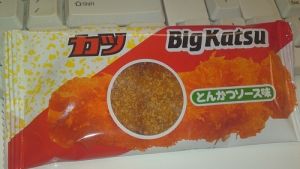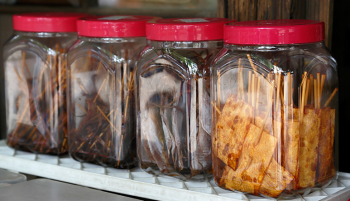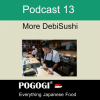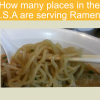List Of Favorite Children’s Snacks In Japan
Being more famous for its traditional cuisine, Japan may not be known as a snack-obsessed country but it does have a wealth of snacks especially for children in a seemingly endless number of flavor and regional iterations.
Dagashi
The history of modern Japanese snacks for kids may well begin with dagashi, which were inexpensive sweets and snacks that were first created for children in the Edo Period (1603-1868). Prior to dagashi, sweets using expensive refined white sugar were mainly served at tea ceremonies.
Eventually, dagashi utilizing sugars from grains became popular with the masses. They used to be sold in stores exclusively for dagashi, with children pooling their money, carefully choosing their snacks and sharing amongst themselves. But with rising incomes and low birth rates, dagashi have declined in popularity, and are now sold in convenience stores and supermarkets but still costing 10 to 50 cents apiece.
Yogurt Mix
Popular dagashi include “yogul,” a mixture of yogurt, sugar and shortening sold in tiny pots; “sauce sembei” which is a wafer smeared with “sauce” such as plum jam, honey or glucose as the sweetener. As with most Japanese snacks, savory ones are popular too such as “big katsu” which resembles a pork “katsuretsu” (cutlet) but it is actually made of fish and squid.

 by mdid
by mdid
The most popular dagashi nowadays is “umaibo,” a stick-shaped corn snack with a powdered flavor coating. Kids go crazy for “corn potage,” “tonkatsu sauce,” and “teriyaki burger*1” umaibo while adults love “octopus,” “shrimp mayonnaise,” and “spicy fish roe” flavors.
*1 Learn more about Teriyaki and its health benefits.
Classic Favorites
Pretzel-type snacks have been sold for decades and are still popular until today. First sold in the 60s, “Pretz” and “Pocky” are stick pretzels with various flavors. Pretz is the savory one with “salad,” “butter,” and “roast” versions, and Pocky is the sweet one with chocolate, strawberry and crushed almond coatings. As with most snacks, there are special versions such as “Hawaiian Pineapple,” only available in the U.S. and “Canadian Maple Syrup” in Canada!
Japanese Versions
In Japan, there are regional versions of Pocky like “matcha” and “wine” in the Kansai area. Another pretzel-type snack is “Kinoko no Yama,” a mushroom-shaped pretzel with a chocolate top and a biscuit bottom. First sold in the 70s, its secret lies in its perfect ratio of milk chocolate, dark chocolate and biscuit. One of its more unusual regional flavors is a ginger, chestnut and black pepper version!
Modern Bestsellers
Jagariko may be a simple stick-type snack, but it is a behemoth with annual sales of 200 million dollars. Made of potatoes, it is harder than other snacks and it even came with a warning to chew it carefully when it first came out in the 90s! A rumor has been swirling online that if you add boiling water to a Jagariko cup, you will end up with mashed potatoes, and it’s true. It looks and tastes exactly like the famous fluffy side.
If you’d rather have something chocolate-y, try Galbo, a “new type” of snack that also came out in the 90s. There really isn’t anything like it - it’s like a crunchy chocolate but not exactly a biscuit.
Kids have always liked anything brightly-colored, such as tri-colored sticky rice cake balls known as “dango,” but Japanese children today love Kracie’s line of make-your-own sweets that are hybrid toys and sweets.
Popin Cookin
See how kids can make sushi and bento box lunch staples in candy form. Add water to “Nerunerunerune” powder and watch it change into a gooey candy, then twist and turn to eat.
Everyone loves gummies, and you can make your own with “Gumi Zukan.” Introduced in 2013, they’re fun to make! Place the enclosed mold in the powder, add food coloring to water and squirt this water into the mold and you’ll have animal gummies in no time.






